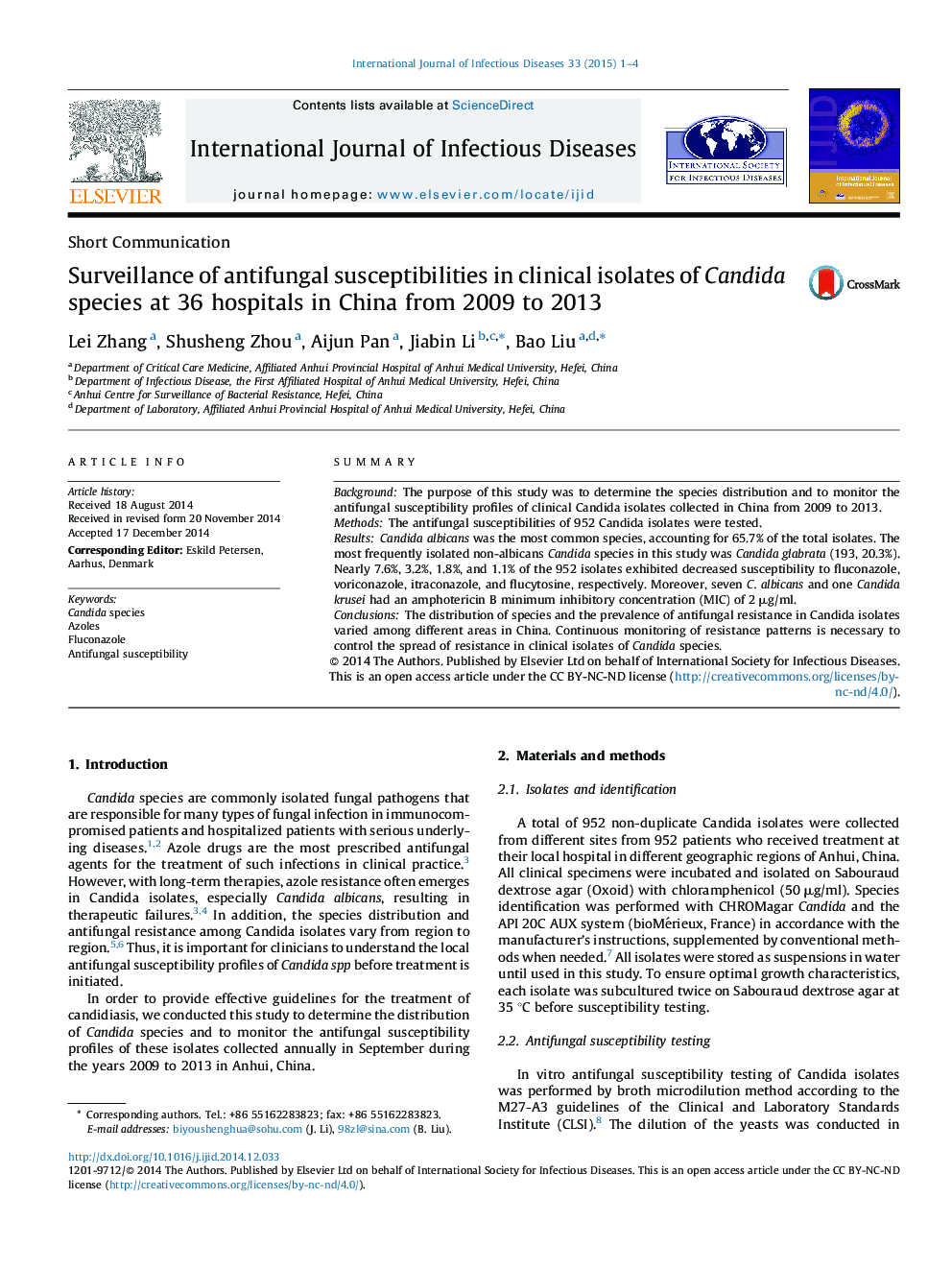| Article ID | Journal | Published Year | Pages | File Type |
|---|---|---|---|---|
| 3362175 | International Journal of Infectious Diseases | 2015 | 4 Pages |
•We determined the species distribution and susceptibility of Candida isolates in China.•Candida species showed reduced susceptibility to antifungal drugs at varying levels.•Candida albicans was the most common species.•The most commonly isolated non-albicans Candida species was Candida glabrata.•This study highlights the important issue of cross-resistance among azole agents.
SummaryBackgroundThe purpose of this study was to determine the species distribution and to monitor the antifungal susceptibility profiles of clinical Candida isolates collected in China from 2009 to 2013.MethodsThe antifungal susceptibilities of 952 Candida isolates were tested.ResultsCandida albicans was the most common species, accounting for 65.7% of the total isolates. The most frequently isolated non-albicans Candida species in this study was Candida glabrata (193, 20.3%). Nearly 7.6%, 3.2%, 1.8%, and 1.1% of the 952 isolates exhibited decreased susceptibility to fluconazole, voriconazole, itraconazole, and flucytosine, respectively. Moreover, seven C. albicans and one Candida krusei had an amphotericin B minimum inhibitory concentration (MIC) of 2 μg/ml.ConclusionsThe distribution of species and the prevalence of antifungal resistance in Candida isolates varied among different areas in China. Continuous monitoring of resistance patterns is necessary to control the spread of resistance in clinical isolates of Candida species.
